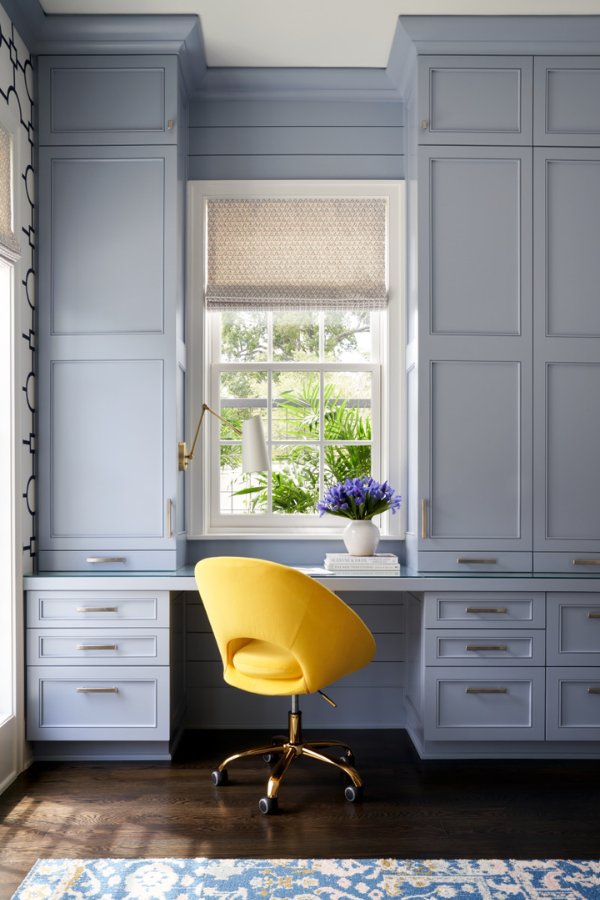The 2024/2025 school year is almost upon us, and with it comes piles of homework, lots of reading, and a few projects. With just a couple of weeks left, this is the perfect time to think about how you can create an inspiring study space for your kids at home. Below are eleven practical tips for designing a study room that encourages creativity, improves concentration, and fosters a life-long love of learning. From choosing the right furniture to considering color psychology, these tips will help you create a homework station that meets your child’s unique needs while enhancing the aesthetic of your home. Happy learning!
Our Top Tips for Creating Study Spaces for Kids
#1 Think About Your Child’s Learning Style First
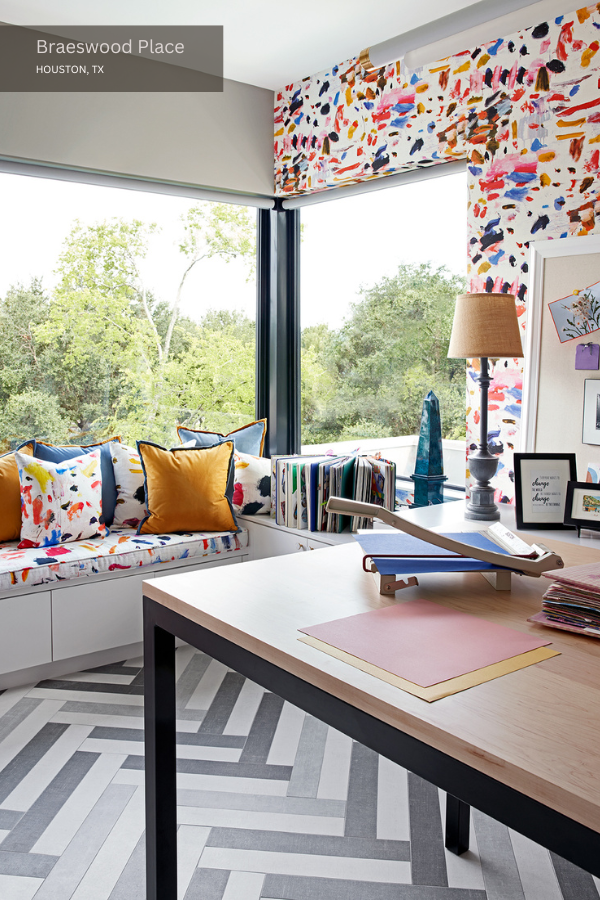
Every child learns differently. Some thrive in group settings while others need a quiet space free of distractions. This resource from Scholastic recommends that parents think about their child’s learning style before setting up a study space at home. Just be sure to avoid “family thoroughfares” if you want your kids to concentrate.
#2 Opt for Ergonomic Furniture Designed with Kids in Mind
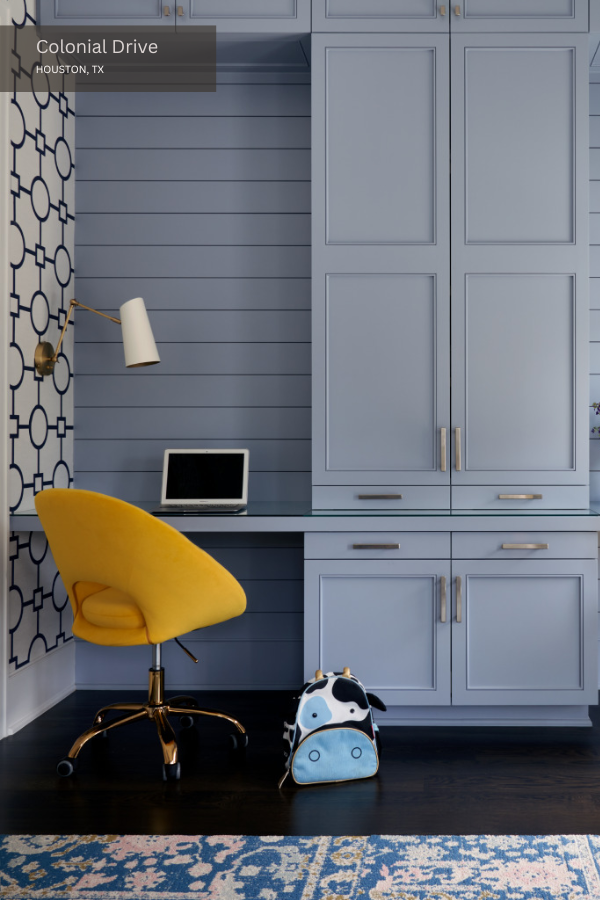
Choose chairs, desks, tables, and stools designed specifically for children—not grown-ups. Unless your kids are older teens who have already hit their adult heights, they need smaller and shorter furniture. For toddlers, tabletops should not exceed 22 inches and chair seats should not be higher than 22 inches. Preschool-age children can have desks between 22 and 24 inches high, and chairs between 12 and 14 inches high. Early elementary-age children can have desks between 24 and 26 inches high and chairs between 14 and 16 inches high. Older elementary and preteens can have desks as tall as 28 inches and 30 inches and chairs as tall as 18 inches and 20 inches respectively.
If your child is shorter or taller than the average kid their age and you’re not sure how to choose the right computer chair, have them sit in a few. Quoting chiropractor Dr. Tom Oddo in this article for Forbes, Korin Miller and Karen Tietjen write that “The chair should be able to be adjusted to a height where the child’s feet may be placed flat on the floor with their knees and hips bent to approximately 90 degree angles.” If your kids are still growing or are different ages from each other, consider investing in adjustable desks and chairs to accommodate their change in height over time.
#3 Pick Performance Fabrics and Durable Surfaces
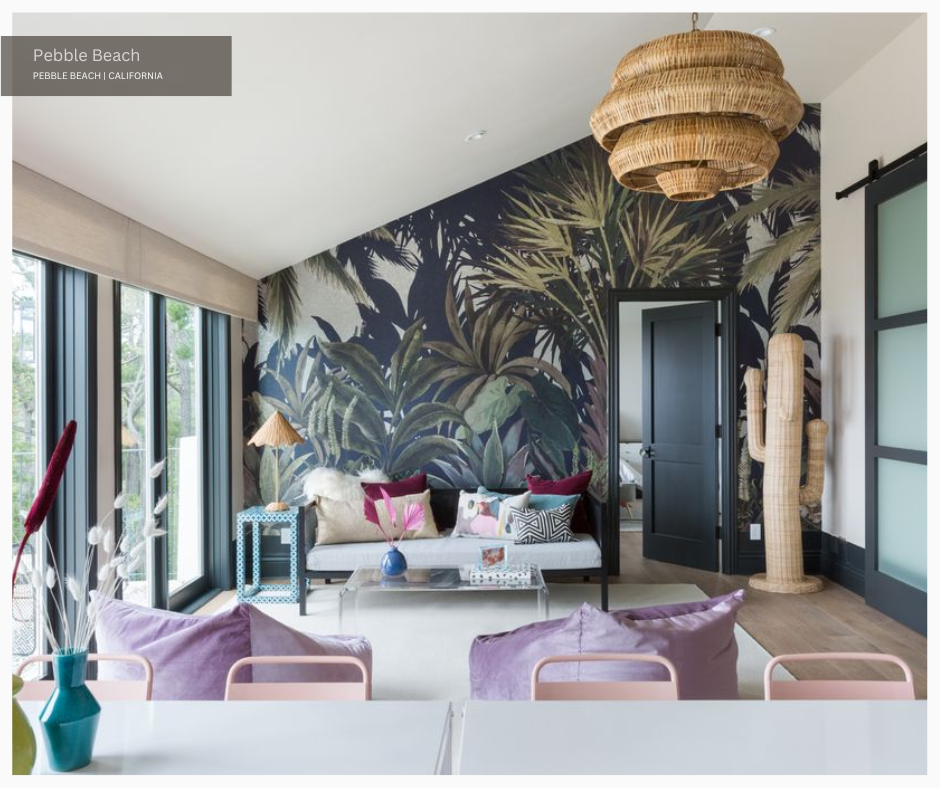
Your kids might not be allowed to eat in their study space, but markers, pens, and craft projects can quickly dirty delicate upholstery. That compass your kids uses for geometry? It could tear a hole straight through your favorite cushion.
Performance fabrics and durable surfaces ensure the furniture in their study space stands the test of time while making it easy for your kids to clean up. From natural wood to leatherette, these materials are designed to withstand spills, stains, and heavy use.
#4 Face Desks Toward a Wall—Not the Window
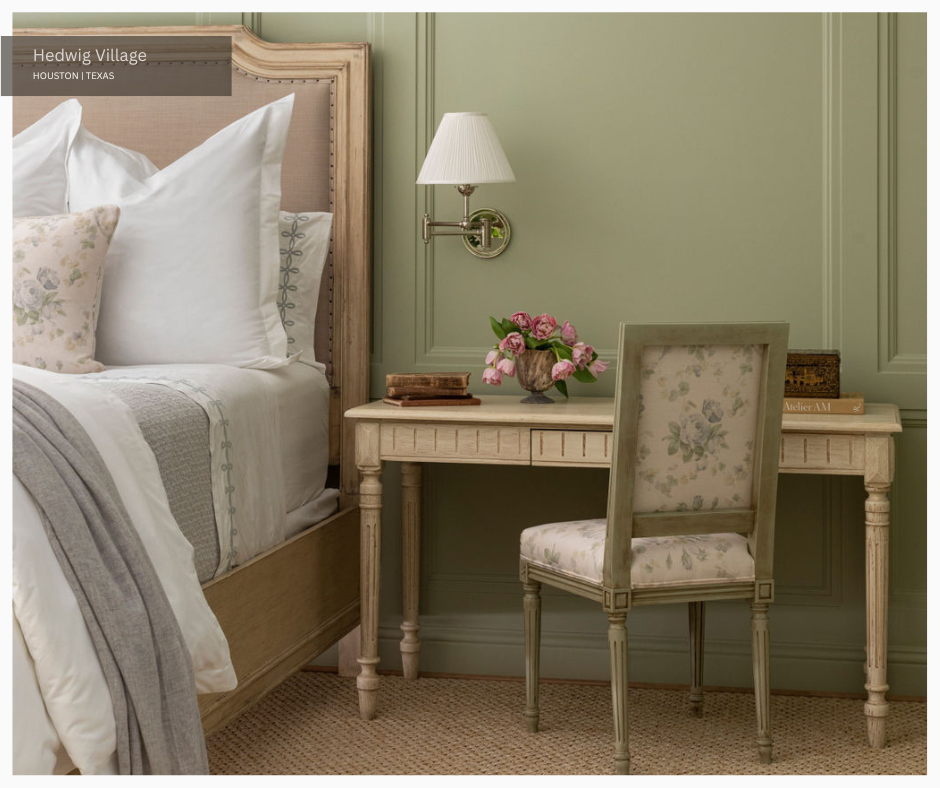
Natural light is absolutely necessary for an ideal home learning space, but views of the pool, pets playing in the backyard, or butterflies flitting through the garden can be quite distracting. If you position desks to face a wall instead of a window, you can minimize those distractions and improve concentration. They can still glance out the window from time to time, but facing a wall empowers kids to stay focused on their tasks with fewer visual interruptions.
#5 Don’t Dismiss that Kitchen Island!
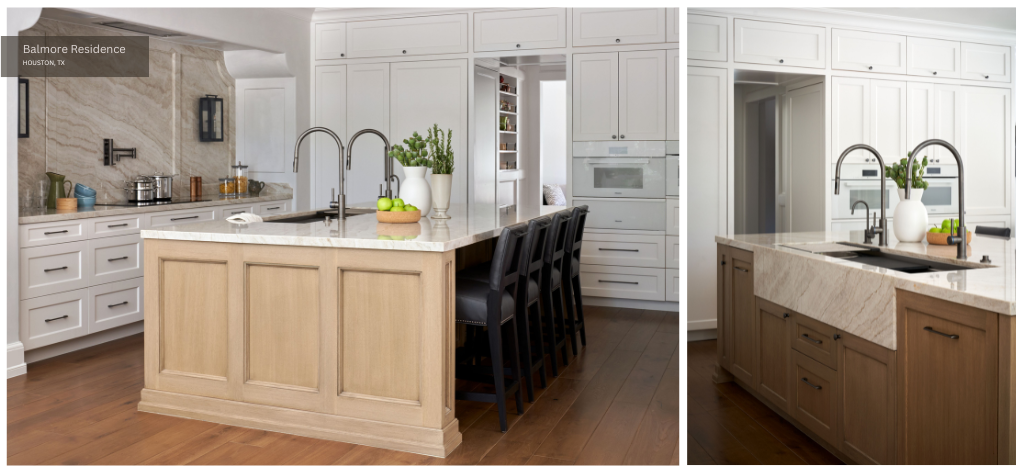
You might dream of a colorful homework room that sparks creativity and supports learning, but younger kids might not need their own study space. As child psychologist Timothy Davis, PhD tells Jennifer Kelly Geddes in an article for This Old House, “‘Younger kids generally need more support during homework time, so a spot in the kitchen or home office means you can be on hand to answer questions and offer encouragement.’”
If space allows, set up a study area at your kitchen island so they can work while you cook or clean. That communal time is invaluable!
#6 Encourage Kids to Put Their Stamp on the Space
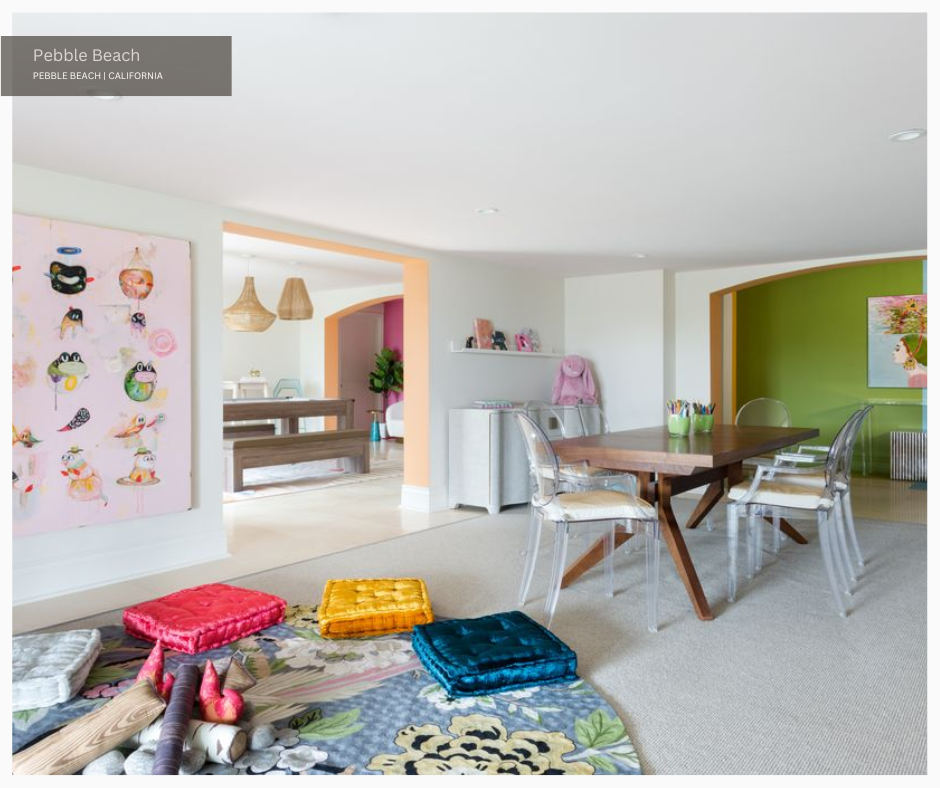
Involve your kids in the design process from the very beginning. Letting kids personalize their study space can boost their motivation, make them more productive, and help them feel more invested in their work. Allow them to choose decorations, colors, and accessories that reflect their personalities and interests.
Whether that’s a colorful desk lamp, a patterned wallpaper, or a pinboard for displaying their artwork and achievements, your kids will appreciate being part of the process. Plus, personalizing the space should imbue your children with a sense of ownership that encourages them to keep their study room clean and tidy.
#7 Consider Color Psychology Before Picking a Palette
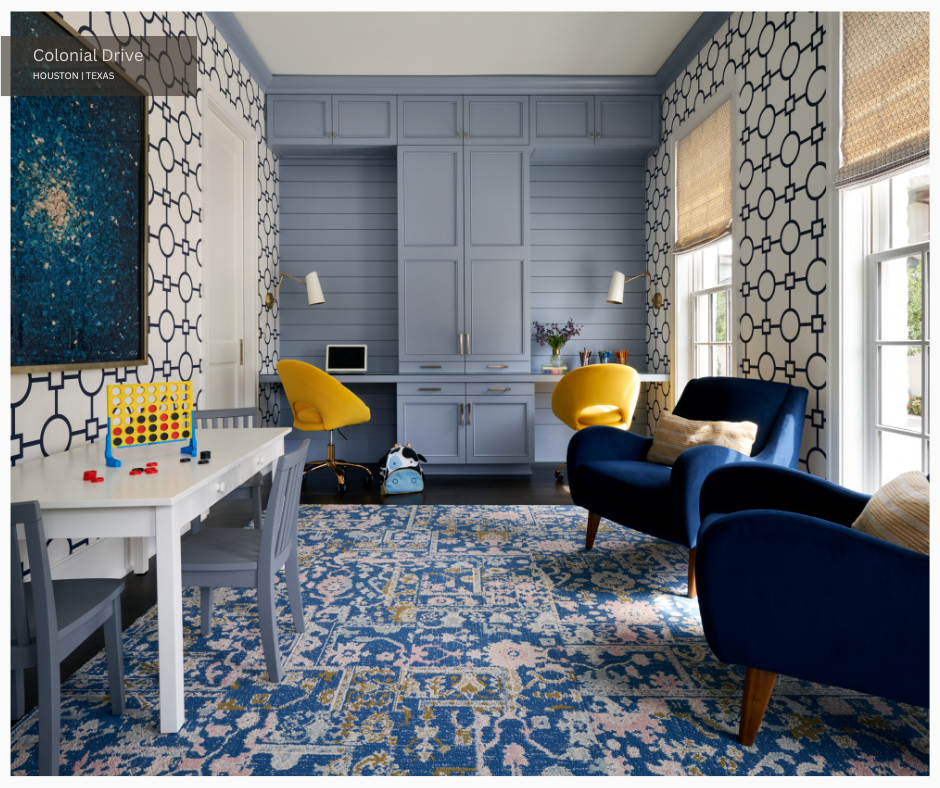
In a 2023 article for PsychologyToday, Dr. Sally Augustin notes that “Seeing the color green has been linked to enhanced creative thinking, so it’s probably a good choice for a painting studio, writer’s nook, or home office.” On the other hand, Augustin writes that “looking at the color red has been tied to degraded analytical performance, so it’s a good idea to keep it out of home offices, study areas, etc.”
Warmer colors also tend to stimulate appetite and can actually make space feel physically hotter—neither of which will help your kids focus. When designing your kids’ study space, stick to cool colors!
#8 Create Zones for Different Types of Schoolwork

Creating different zones within the study space helps organize various activities and makes the area more functional. For example, designate a reading nook with a comfortable chair and good lighting for quiet reading time. Set up a traditional workspace with a desk and chair for computer work, writing, and math problems. A shared table could be the perfect collaborative homework station for group projects or craft activities.
This kids’ bedroom from our Hedwig Village project is ideal because it separates the reading nook from a more traditional workspace. One child can work on his laptop at the desk while the other reads a book by the window.
#9 Ensure Lots of Natural Light
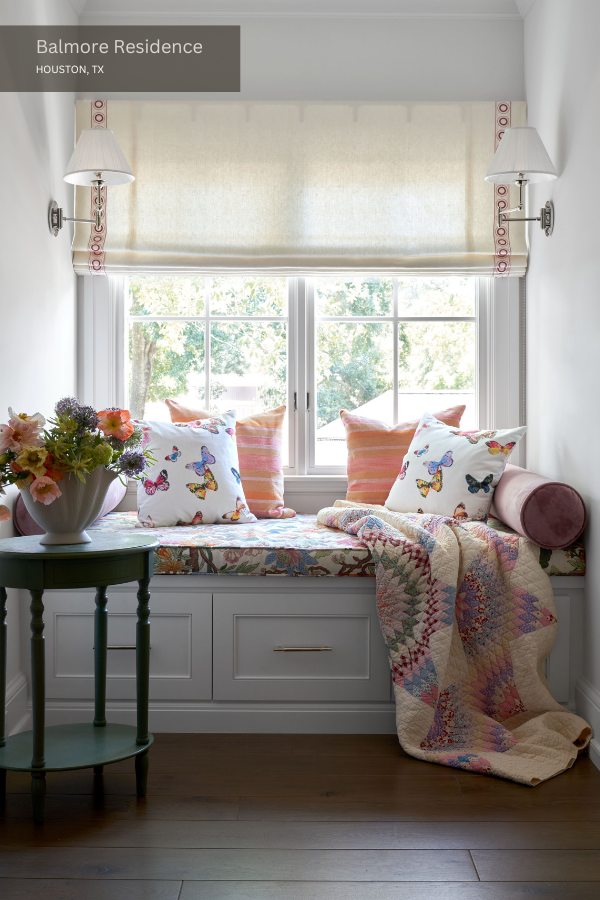
Natural light is essential for great design; it ensures colors are rendered accurately and that even the tiniest rooms feel spacious. But that’s not all. According to this resource written by Jean-Baptiste Clochet for UCL’s Institute for Environmental Design and Engineering, “Natural light positively contributes to a higher academic performance in reading as well as in science.”
Clochet notes that exposure to natural light “also supports attention, the stability of the circadian cycle and overall health, mental health and comfort, which in turn, leads to better academic performance.” To enhance productivity and protect your child’s eyes, make sure their study room has plenty of sunlight.
#10 Make Sure There’s a Spot for All Supplies
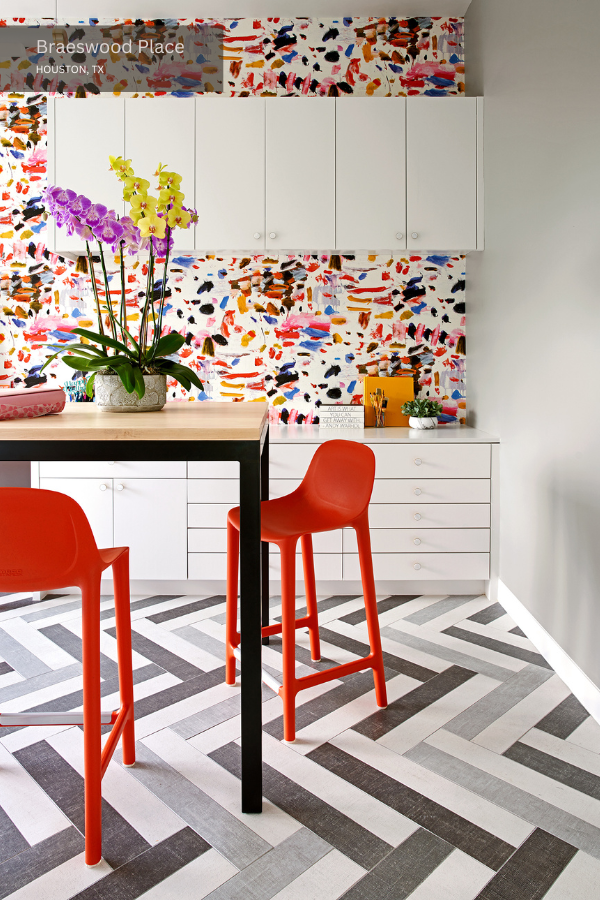
At Laura U Design Collective, our team has designed quite a few playrooms, homework spaces, and craft rooms intended for kids. Storage is always one of the most important elements. To keep your. kids’ study room clutter-free, use properly-labeled bins, shelves, and drawers to store books, papers, and art supplies.
Work with a design firm to create custom storage solutions that look stunning while supporting each hobby and homework assignment. Encourage kids to regularly tidy up their space and put supplies back in their designated spots after use.
#11 Find Ways to Reduce Waste
Teach your kids about sustainability by making their study spaces more eco-friendly. Opt for recycled notebooks and paper, and use apps for note-taking to cut down on paper use. Pick sustainable, non-toxic supplies, and organize with reusable containers. Encourage kids to repurpose supplies from last year and set up recycling bins for easy sorting.
To make the space more energy-efficient, use LED lighting and maximize natural light. Opt for sustainable or second-hand furniture to reduce environmental impact. Last but not least, keep the area tidy with regular decluttering and smart storage solutions so you never buy duplicates of supplies you already have in stock.
Ready to Design Your Kids’ Ideal Study Room (or Yours)?
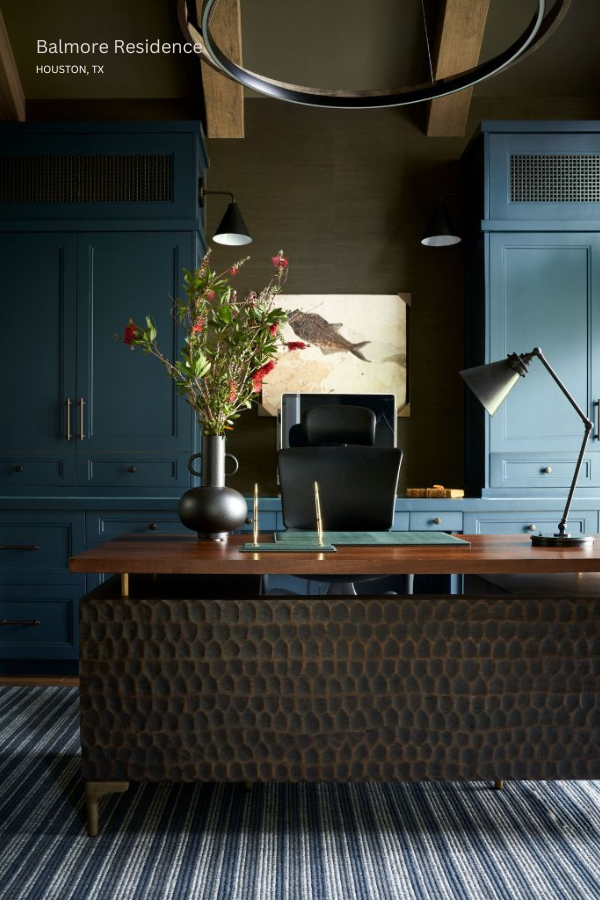
Creating a productive and inspiring workspace for your kids can make a world of difference in how they view learning. By following our tips and tailoring each study area to their unique needs, you can foster an environment that encourages focus, boosts creativity, and fosters organizational skills. If you have any questions or need further guidance on setting up a productive workspace for your children—or even for yourself—don’t hesitate to reach out.
Whether you’re ready to remodel a home office or redesign a playroom, our team at Laura U Design Collective is here to help. Contact us to transform your space into one that meets your family’s needs while supporting their growth and success.


